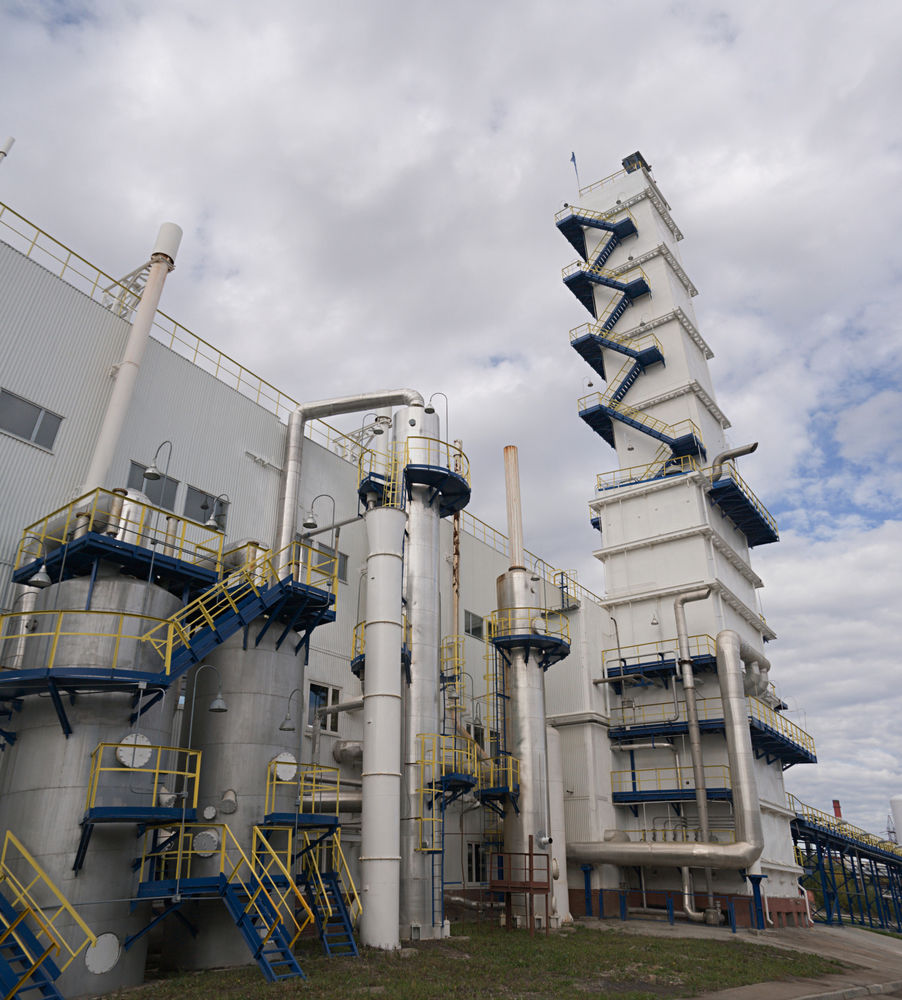
Air separation plants are a primary source of high purity oxygen and nitrogen. Current day applications of the process date back to 1895, when Carl Von Linde and William Hampson developed the revolutionary process using countercurrent heat exchangers and refrigeration via the Joule-Thompson effect to yield liquification of the air. This is an oversimplification of the development by Linde and Hampson, which was further cultivated over the next nine years. This led to the creation of the world’s first air separation plant and the precursor to the present-day air separation plants used across the globe. These air separation plants provide oxygen for the production of metals, chemicals, glass, concrete, refined petroleum products, and many others.
The current process at a standard air separation plant can be divided into four specific areas. These include filtering and compression of the air, removal of carbon dioxide and water vapor, cooling of the purified air to liquification, then distillation for purification. To explain where adsorbents are used, let’s focus on the critical step of removing carbon dioxide and water vapor.
To remove carbon dioxide and water vapor, a prepurifier is used to pretreat the air. This is a critical step in the process because both carbon dioxide and water vapor freeze when cryogenic temperatures are reached (at approximately -185 degrees Celsius). This can lead to a plant shutdown due to the heat exchangers freezing during the compression and cooling of purified air to liquification. This type of failure can be very costly depending on the business obligations and how the impact of the shutdown is mitigated. To prevent the freezing, air separation companies need a molecular sieve in the prepurifier with high performance, dependability, a proven record, and strong physical properties.
The Zeochem line of molecular sieves are:
- High performance
- Field-tested
- Globally utilized
- Exhibits exceptional physical characteristics
- Excellent capacity and kinetics
- Long and verified breakthrough times
Included in the Zeochem product line is the Z10-22 molecular sieve. The Z10-22 is a high capacity 13X molecular sieve that recognizes a 20% working capacity increase for carbon dioxide versus standard 13X materials. The Z10-22 is proven to work exceptionally well in a prepurifier because of its increased capacity and elongated breakthrough times. In all cases where increased working capacity is needed, the Z10-22 provides an opportunity for substantial improvement without extensive reengineering or large added financial contribution.
When it comes to exceeding productivity and performance requirements, depend on Zeochem for consistent, high-quality products and personalized service. To learn more about Z10-22 and the Zeochem molecular sieve portfolio, please contact us at info@Zeochem.com. We are eager to assist you with all your molecular sieve needs.